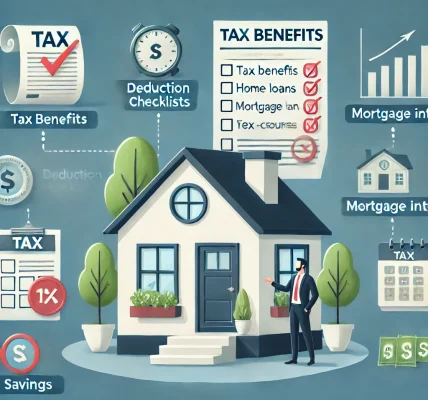As a small business owner, managing your taxes effectively can make a significant difference in your business’s profitability and long-term financial success. While taxes are an inevitable part of running a business, tax planning allows you to reduce your tax liability, maximize deductions, and keep more of your hard-earned money.
In this blog, we’ll share essential tax planning tips that every small business owner should know to navigate the complexities of tax season while taking full advantage of available deductions and credits.
Why Tax Planning is Crucial for Small Business Owners
Small business owners often face unique challenges when it comes to taxes. Unlike salaried employees, business owners must manage not only their personal taxes but also business-related taxes, which include payroll, sales tax, and income tax. Effective tax planning is critical because it allows you to:
- Reduce taxable income: Minimize your tax burden by taking advantage of available deductions and credits.
- Ensure compliance: Avoid penalties by keeping up with your tax obligations.
- Boost cash flow: Save money on taxes and reinvest it into the business to fuel growth.
- Plan for retirement: Use tax-advantaged retirement accounts to ensure your financial future is secure.
With the right tax strategies in place, you can maximize your savings and focus on growing your business.
1. Separate Business and Personal Finances
One of the first steps in effective tax planning for small business owners is to separate business and personal finances. This might seem like an obvious tip, but many small business owners make the mistake of mixing the two, which can complicate tax filing and increase the risk of audits.
- Open separate bank accounts: This will make it easier to track income and expenses.
- Create clear boundaries for deductions: Only business-related expenses should be deducted on your taxes.
- Consider incorporating: Incorporating your business (e.g., forming an LLC or S-Corp) can provide personal liability protection and tax benefits.
By separating your finances, you’ll ensure that your business expenses are clearly distinguishable and easier to manage come tax time.
2. Maximize Deductions for Business Expenses
One of the most significant benefits of owning a business is the ability to deduct a variety of business-related expenses. These deductions reduce your taxable income and, consequently, your tax liability. Here are some common business expenses you can deduct:
- Office Supplies: Items like computers, software, printers, and other office essentials are deductible.
- Business Use of Home: If you work from home, you may qualify for the home office deduction, which covers a portion of your mortgage, utilities, and home maintenance.
- Travel and Meals: Business-related travel expenses, including airfare, hotels, and meals, are deductible.
- Vehicle Expenses: If you use your car for business purposes, you can deduct a portion of your vehicle expenses, including mileage, fuel, and maintenance.
Keep track of all business expenses throughout the year to ensure you don’t miss out on any valuable deductions. A well-organized accounting system can help streamline this process.
3. Take Advantage of Tax Credits
In addition to deductions, there are several tax credits available to small business owners that can reduce your tax liability on a dollar-for-dollar basis. Here are some common credits to look out for:
- Research and Development (R&D) Tax Credit: If your business is involved in innovation or developing new products or processes, you might qualify for this valuable credit.
- Work Opportunity Tax Credit (WOTC): This credit allows businesses to receive tax breaks for hiring individuals from certain target groups, including veterans, long-term unemployed, and individuals with disabilities.
- Small Employer Health Insurance Credit: If you provide health insurance to your employees, you may be eligible for a credit that offsets the cost.
Tax credits are often underutilized, so make sure to consult a tax professional to determine which credits apply to your business.
4. Set Up a Retirement Plan for You and Your Employees
Another way to reduce your taxable income is by contributing to a tax-advantaged retirement plan. As a small business owner, setting up a retirement plan offers both immediate tax benefits and long-term financial security. Consider these options:
- SEP IRA: A Simplified Employee Pension (SEP) IRA allows business owners to contribute up to 25% of their income, up to a maximum of ₹60,000 for the year (subject to income limits).
- 401(k): Offering a 401(k) to your employees (and yourself) can provide significant tax benefits. Employee contributions are tax-deferred, and you can contribute as an employer as well.
- Profit-Sharing Plans: Profit-sharing plans allow business owners to contribute a percentage of their company’s profits to employee retirement accounts, reducing taxable income for the business.
By setting up a retirement plan, you not only reduce your tax burden, but you also enhance employee retention by offering a valuable benefit.
5. Keep Track of Depreciation
Depreciation allows you to deduct the cost of certain business assets over time, rather than all at once. If your business has purchased equipment, machinery, or property, you can depreciate these assets and lower your taxable income.
- Section 179 Deduction: The IRS allows you to deduct the full cost of certain qualifying assets in the year they are purchased, rather than depreciating them over time.
- Bonus Depreciation: For qualifying assets, you can deduct 100% of the cost in the first year.
Make sure to track the depreciation of your assets and consult with a tax advisor on the most tax-efficient way to handle this process.
6. Estimate Quarterly Taxes
As a small business owner, you are generally required to pay estimated taxes quarterly. This can be a tricky process if you’re not prepared, but paying quarterly helps avoid penalties for underpayment. Here’s how to make the process easier:
- Use an accounting software: Many accounting software packages can help you track your income and estimate your quarterly tax payments.
- Work with a tax professional: A tax advisor can provide a more accurate estimate of your quarterly tax obligations based on your income, deductions, and credits.
By planning ahead and making quarterly payments, you’ll avoid a large tax bill at the end of the year and keep your business finances in check.
7. Consult with a Tax Professional
Finally, one of the most effective tax planning tips is to consult with a qualified tax professional. A tax advisor can help you navigate the complexities of small business taxes, identify deductions and credits you may have missed, and ensure you’re taking full advantage of tax-saving strategies.
A tax professional can also help you plan for future growth, optimize your business structure for tax efficiency, and ensure that you’re complying with all applicable tax laws.
Conclusion
Tax planning is an essential part of managing your small business’s finances. By following these tips, you can reduce your tax liability, improve your cash flow, and reinvest the savings into growing your business. Remember to separate your personal and business finances, maximize your deductions, take advantage of tax credits, and set up retirement plans for long-term savings.




